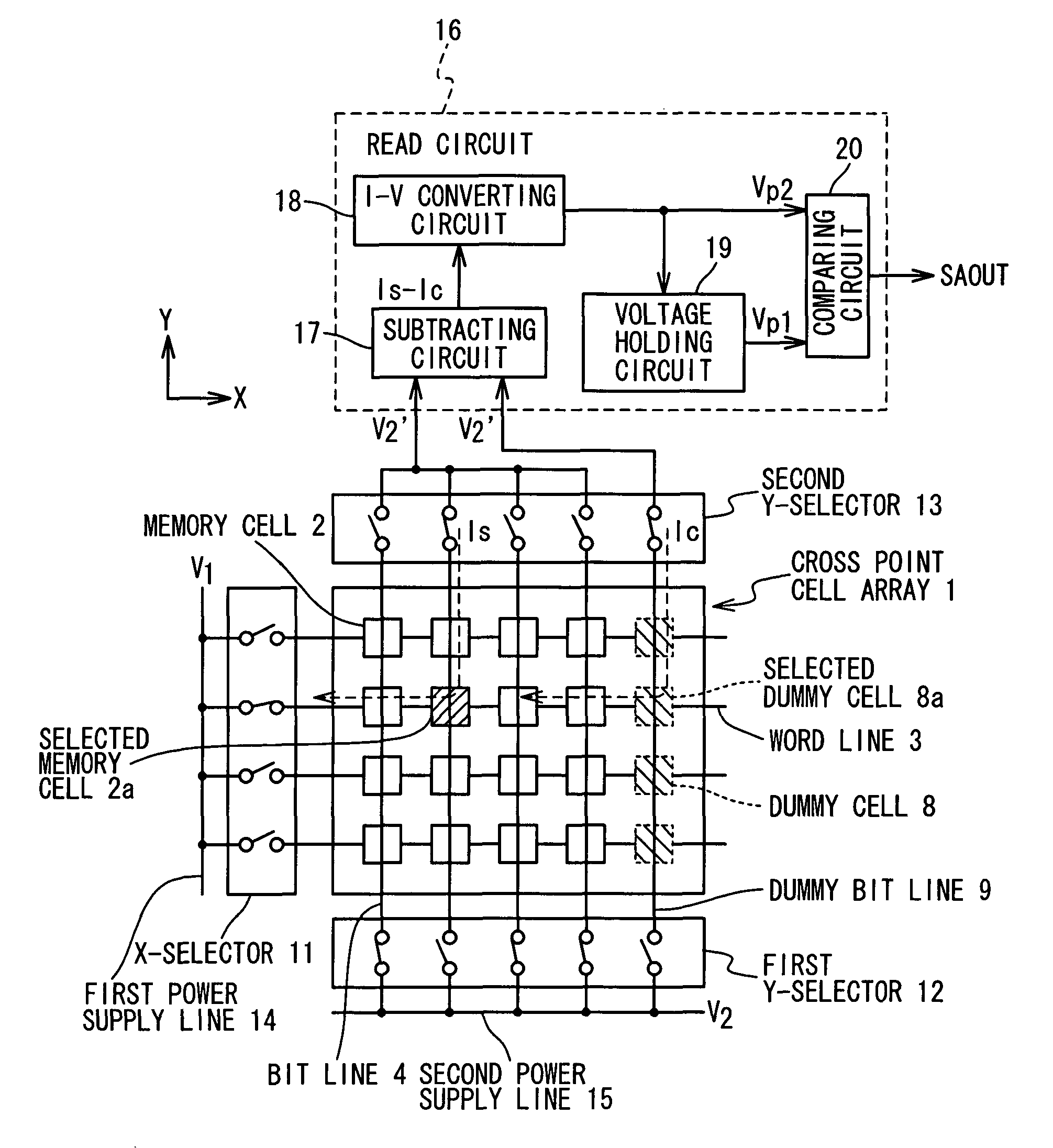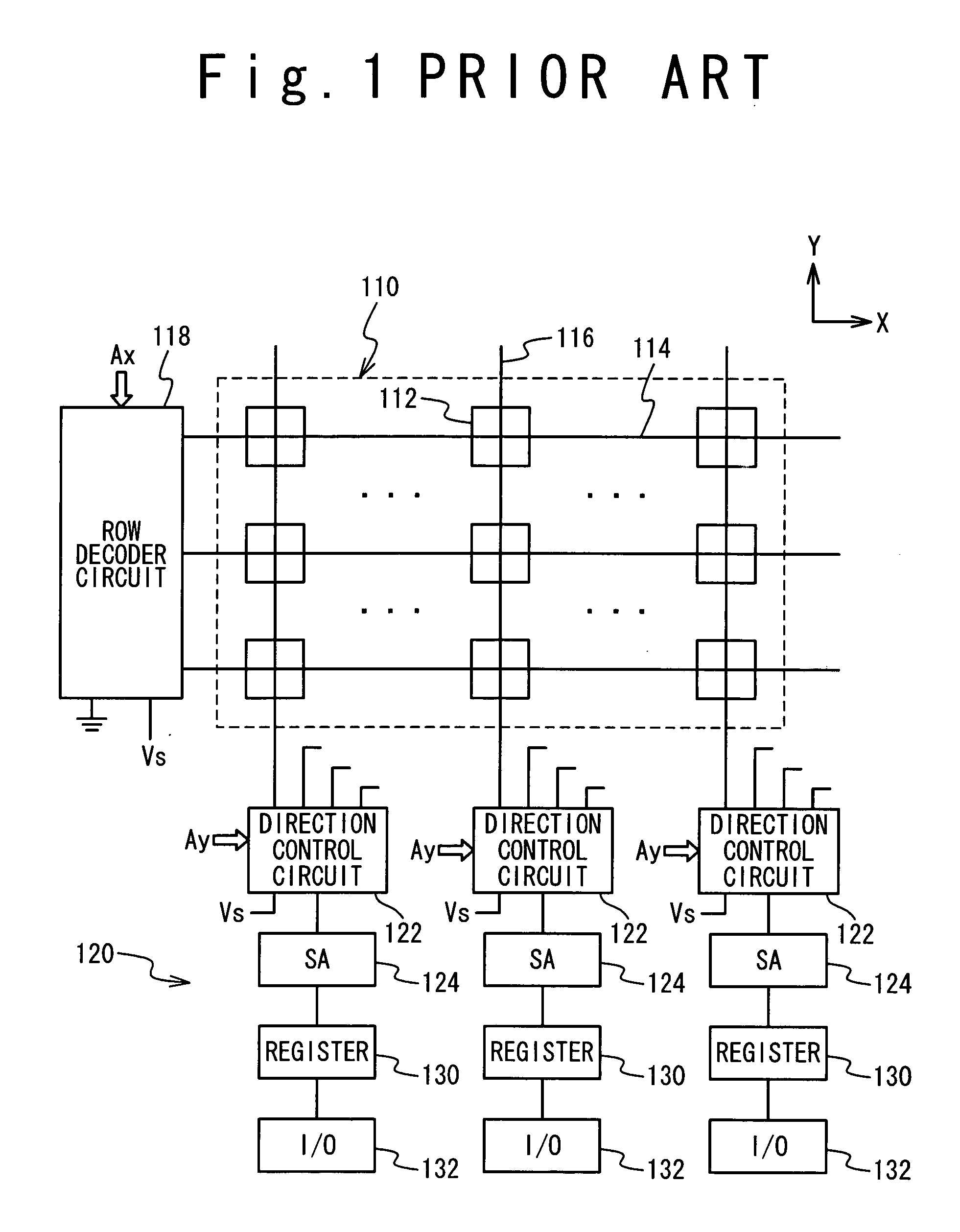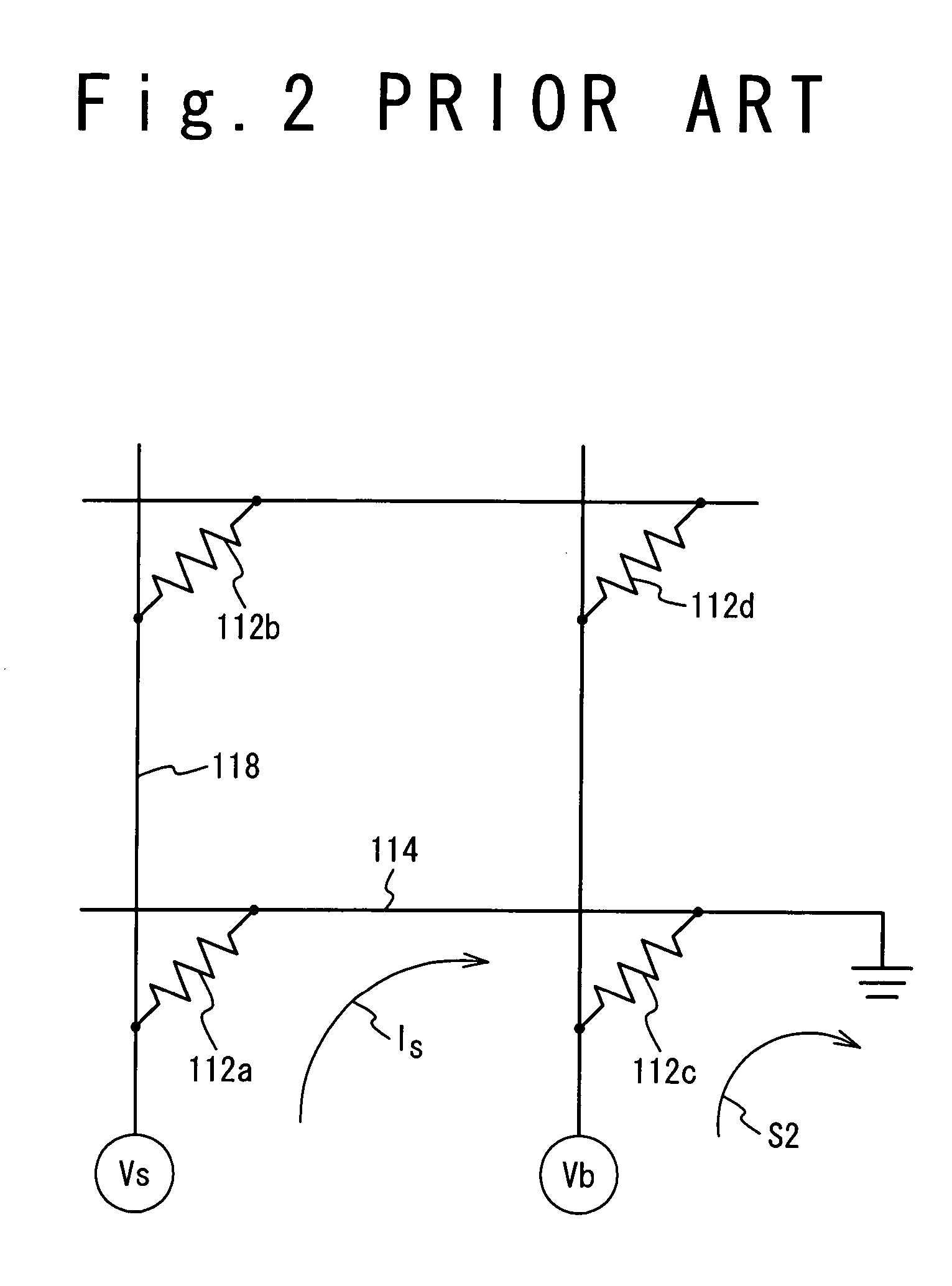Magnetic random access memory
a random access and memory technology, applied in the field of magnetic random access memory, can solve the problems of reducing the effect, affecting the correct detection of the resistance of the memory cell,
- Summary
- Abstract
- Description
- Claims
- Application Information
AI Technical Summary
Problems solved by technology
Method used
Image
Examples
first embodiment
[0074] (First Embodiment)
[0075] The magnetic random access memory according to the first embodiment of the present invention is composed of a cross point cell array 1 as shown in FIG. 4. The cross point cell array 1 contains a plurality of memory cells 2, a plurality of word lines 3 extending into the X-direction (row direction) and a plurality of bit lines 4 extending into a Y-direction (column direction). The memory cell 2 is arranged in the intersection of the word line 3 and the bit line 4.
[0076] As shown in FIGS. 5A and 5B, each of the memory cells 2 contains a magnetic tunnel junction (MTJ) which is composed of a pin layer 5, a free layer 6 and a tunnel barrier layer 7 interposed between the pin layer 5 and the free layer 6. The pin layer 5 is connected with the word line 3 and the free layer 6 is connected with the bit line 4. The pin layer 5 and the free layer 6 contain ferromagnetic layers with spontaneous magnetization. The spontaneous magnetization of the pin layer 5 is f...
second embodiment
[0117] (Second embodiment)
[0118] FIG. 10 shows the magnetic random access memory of the second embodiment. In the second embodiment, the cross point cell array 1 of FIG. 4 is added with reference cells 31 and a reference dummy cell 32 which are arranged in line in the X-direction (the direction of the word line), and a reference word line 33 extending into the X-direction (the direction of the word line). Such a cross point cell array 1 is hereinafter referred to as a cross point cell array 1'.
[0119] The reference cells 31 and the reference dummy cell 32 have the same structure as either of the memory cells 2. Each of the reference cells 31 and the reference dummy cell 32 contains a magnetic tunnel junction which is composed of a pin layer, a free layer, and a tunnel barrier layer interposed between the pin layer and the free layer.
[0120] A predetermined data such as "0" is stored in the reference cell 31 which is used for the determination of the data in case of a read operation. H...
third embodiment
[0144] (Third Embodiment)
[0145] As descried above, in the magnetic random access memories shown in FIGS. 4, 9, 10 and 13, it is impossible to read data from the memory cell 2 which is connected with the same bit line as a short-circuited cell when the short-circuited cell exists in the cross point cell array 1 (or 1'). However, the existence of the short-circuited cell does not have any influence on the read operation of the memory cell 2 which is connected with the same word line as the short-circuited cell. Such a characteristic makes the redundant design easy in which the fault cell column containing the short-circuited cell is substituted by a redundant cell column of redundant memory cells. The redundant design is adopted for the magnetic random access memory in the third embodiment.
[0146] FIG. 14 shows the magnetic random access memory in the third embodiment. The magnetic random access memory in the third embodiment is composed of a plurality of cross point cell arrays 41 arr...
PUM
 Login to View More
Login to View More Abstract
Description
Claims
Application Information
 Login to View More
Login to View More - R&D
- Intellectual Property
- Life Sciences
- Materials
- Tech Scout
- Unparalleled Data Quality
- Higher Quality Content
- 60% Fewer Hallucinations
Browse by: Latest US Patents, China's latest patents, Technical Efficacy Thesaurus, Application Domain, Technology Topic, Popular Technical Reports.
© 2025 PatSnap. All rights reserved.Legal|Privacy policy|Modern Slavery Act Transparency Statement|Sitemap|About US| Contact US: help@patsnap.com



